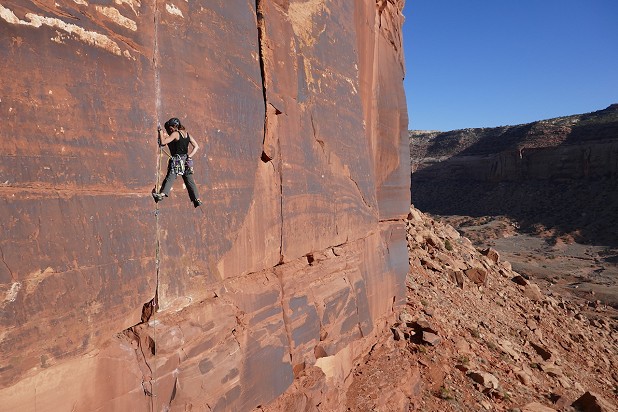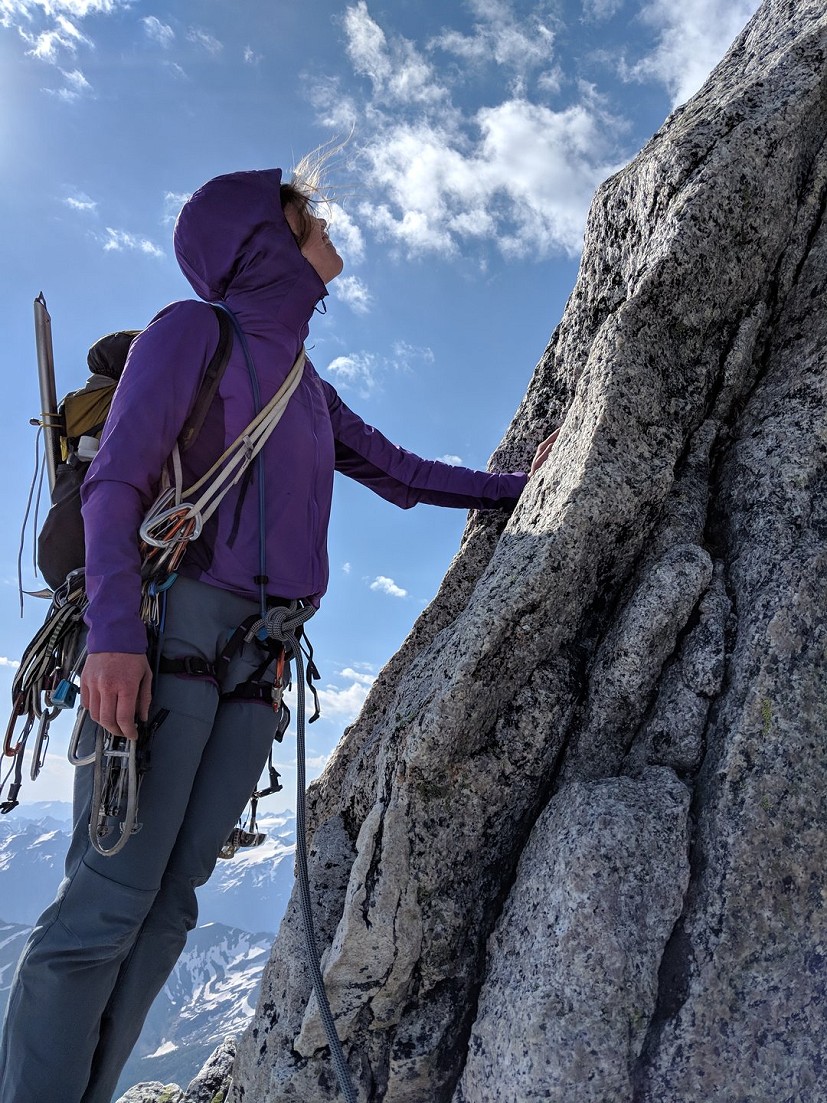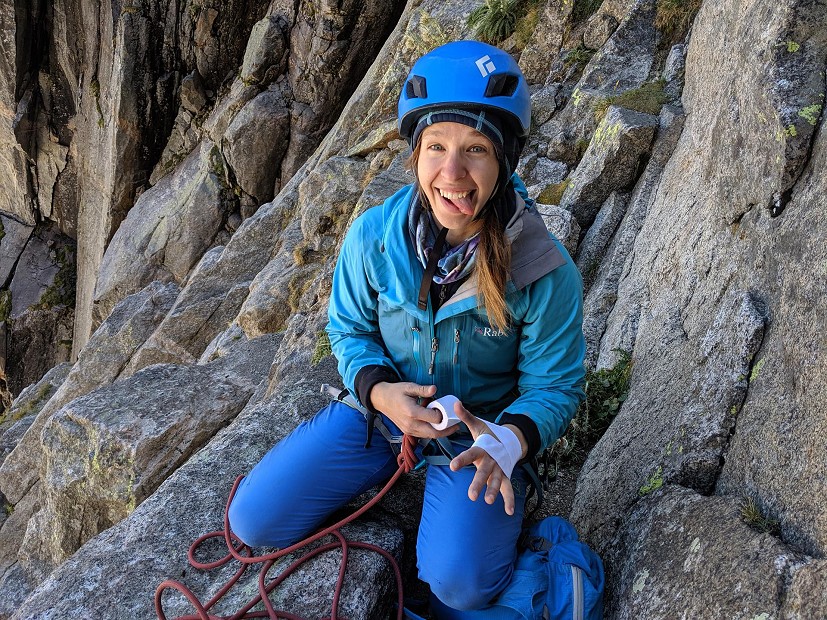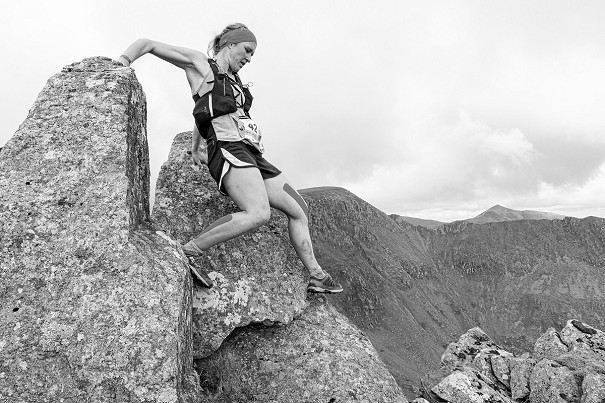
Climbing coach and writer Ari Schneider explores gender bias in climbing media and reveals the results of a small study he conducted into bias in online articles.
"Stubble jawed…"
"Dainty and delicate…"
"Tall…"
"Unassuming…"
"Strong…"
"Small but surprisingly powerful…"
"A picturesque mountaineer..."
How do the adjectives writers use to describe climbers affect readers' perceptions of what the best climbers should look like?
An article titled Freedom of the Hills? in the June issue of Climbing piqued my interest. The story's writer, Ilana Newman, shared the narratives of a number of female climbing guides, revealing first-hand stories of gender discrimination and harassment in the male-dominated guiding industry. The article came as no surprise to me. It's not a secret that the quintessential marketing image of a mountain guide is a tall, bearded, weather-worn hardman. This drawing of a mountaineer that we are inclined to create is a result of what a historically male dominated industry of writers, marketers, photographers, and publishers have stencilled into our minds.
I see gender bias almost every time I go to the crag. These instances may be little things, like a male reaching in without invitation to tie a knot for a woman—classic "mansplaining." I'm guilty of this. I remember one day climbing a few pitches on The Apron in Squamish with two of my female friends, and upon topping out I took my rope out of one of their hands while they were in the middle of coiling it and finished the coiling job myself. After seeing the mildly frustrated look on my friend's face, I immediately understood what I had done. Initially, in my head, I had just wanted to coil my own rope in my preferred style—a butterfly coil with a mountaineer's finish. Ask any of my climbing partners, I am picky when it comes to the way in which my rope is coiled, so I prefer to do it myself. But what I had actually done was send an implicit message to my friend that she wasn't skilled enough to coil a rope well. I immediately apologised for my act of sexism, and admitted that I should've let her coil it, because at the end of the day, it makes very little difference if I load the rope into my truck in a butterfly or a backpack coil.
I know what some men reading this might be thinking, "Oh come on, who gets all hung up on a guy coiling his own rope? That's not sexism. Women need to be less sensitive!" But imagine living your whole life in the shadow of generations of repressed women. Recognise that many women are frequently given the impression that, because they are women, they are not competent enough to perform well in the mountains. Suddenly, a know-it-all guy unnecessarily mansplaining how to coil a rope is complicit in a long history of women being told they're not good enough.
I was always a short, skinny, awkward kid. Throughout my entire childhood I had the big "manly" men in my life reaching over my shoulder, grabbing and moving my body without my permission, to "properly" demonstrate how to do "man things" like swinging a baseball bat, using a handsaw, or starting a campfire. More often than I was complimented, I was told tacitly and explicitly that I was too short or too skinny or too quiet. These small but frequent personal attacks had a long-term negative impact on my self-worth and social anxiety. But still, I have enjoyed the many privileges of being a cis man. As much as some of my experiences have made me feel uncomfortable, it's nothing compared to the extent to which cis women, transgender men and women, and non-binary people have been marginalised.
When a cis woman, transgender man or woman, or non-binary person is belittled because of their skill level or appearance, it is more than a singular act of aggression. It's a piece of a huge puzzle that has been cut out by repeated discrimination against all of the non-cis-male genders. Unfortunately, this discrimination is only the tip of the iceberg on top of a history of violent acts and persistent harassment disproportionately committed against people of non-cis-male genders by their male counterparts.
Newman's article ended with a strong point. "The question is not whether or not women can climb or guide clients up mountains—clearly, we can." Quoting IFMGA Guide Erica Engle, she insists that the important questions are, "How has the culture of our society disproportionately affected women? And how do we shift those cultural and structural institutions and contexts to allow women to manifest fully?"
Reflecting on Engle's questions, I pointed myself towards the source of most of the information the climbing world receives. The media, unfortunately a frequent source of human bias, seemed like a valuable place to investigate gender discrimination.
I decided to read and analyse 80 news articles, twenty each, from four climbing media sources. Two sources were American, one Canadian, and one British. I was curious to see if there were any noticeable patterns in the adjectives used to describe professional climbers' appearances or well-beings. Perhaps a certain gender would receive significantly more positive or negative descriptors, which would exhibit evidence of gender bias in the climbing media.
This assumption is not without precedent. Swedish professional climber Matilda Söderlund recently made a post on Instagram sharing how she has been on the receiving end of gender bias. On a regular basis she has found messages in her inbox telling her how she "should" look. In her post she confessed, "Like a lot of other girls, I struggled with body image when I was in my teens...I was 'too tall, too skinny, my legs were too long, my shoulders too wide.'" Now she says she's proud of the way her body looks—strong, like a climber. But according to Söderlund, there is an expectation that women need to be careful not to get too muscular in order to maintain a feminine appearance.
Articles from each news source were randomly selected from work published within the first quarter of 2019. A couple of factors disqualified articles from my review because I believed they wouldn't provide insight into the voice of the journalists. Therefore, to keep this study strictly focused on climbing news and profiles of specific climbers, I did not include any standalone interviews or videos.
For each article, I identified the writer's gender if that information was available. I kept tallies of every subjective description of a climber's appearance or wellbeing and marked the mentioned climber's gender and whether the description was generally positive, negative, or neutral. Due to underrepresentation, there were no mentions of nonbinary or transgender climbers. Thus, the data outlined here will only mention cis males and females.
I tried my best to keep my standards for analysis consistent from article to article. I did not note descriptions of objective actions such as, "He quickly flashed the problem." However, I did include subjective descriptions of actions like, "He was incredibly graceful as he climbed the route." That statement would have been marked as a positive descriptor. Negative comments had to do with unfavourable states of being. They usually described such things as levels of exhaustion or frustration, but they were never outright mean statements about physical characteristics. Two examples of negative comments are, "He looked unhappy with his performance on that route," and, "Her fingers were bloody from crimping the razorblade holds."
I did not record references to the climber's age unless it was a subjective remark about age like, "She looks much older than she is." Such a statement could be either positive or negative depending on context, but would most likely be marked as a neutral comment if it was written without implication. A comment about age with a negative bias was, for example, "Even at age 31, she hasn't slowed down." One might initially read that statement as a compliment—she is still crushing it, after all. However, there is a stereotype portraying top female climbers as young women in their early twenties. That quote, a real caption describing Angy Eiter in a profile, implies that there are low expectations for a woman as "old" as 31. It seems that male climbers are portrayed as having a much longer shelf life. Who would be surprised to hear that Alex Honnold, age 33, and Kevin Jorgeson, age 34, are still performing at such high levels?
This isn't an original method for analysing gender bias. It has been used to better understand many instances of suspected gender bias. For example, a similar method was used in the United States during the 2008 Presidential Election. A number of scholars turned their research to patterns of descriptive language in the media amid concerns that Hillary Clinton was at a disadvantage against her male competitors during the Democratic Primary simply because of her gender. Joseph Uscinski, Professor of Political Science at the University of Miami, along with Lilly J. Goren, Professor of Political Science at Carroll University, devised a method similar to mine to analyse the professional titles used by news anchors to identify Clinton and her opponents. Their data revealed that Clinton was more frequently referred to informally by her first name than male candidates, and their analysis attributed the pattern to gender bias.[1]
Out of the 80 articles I analysed, 30 were written by male writers and 25 were by female writers. 25 of the articles did not have an identifiable author. In this case, the author was usually listed simply as "Editors." There were a total of 131 descriptive references to male climbers and 100 descriptive references to female climbers. Of the references to male climbers, 41 of them were positive, 63 were negative, and 21 were neutral. Of the references to female climbers, 29 were positive, 61 were negative, and 10 were neutral. Negative comments made up the plurality (48%) for male climbers and the majority (61%) for female climbers. These findings show that, while adjectives for both genders were most likely to be harsh, descriptors used for female climbers were more frequently harsh compared to male climbers.
Interestingly, 57% of the comments about male climbers' appearances were made by male writers and only 19% were made by female writers. Of the comments made about female climbers' appearances, only 21% were by male writers and 76% were by female writers. I think it's fair to conclude from the data that male writers are more likely to comment on another male's appearance, and likewise, female writers are more likely to comment on another female's appearance. I am not exactly sure why writers have this tendency to almost exclusively judge the appearance of others of their same gender. Perhaps there's a general sentiment that it's not in good taste to talk about the appearance of someone of a different gender. But my suspicion is that this pattern is most apparent because humans are inclined to compare themselves to others who are similar to them.
This alone is a case for a strong push to provide more representation for marginalised groups in the climbing world. As a man, it's easy to picture myself in the mountains—alongside the hardened dirtbag men on the alpine peaks in Patagonia and on the steep walls in Yosemite. But how can women so easily picture themselves as climbers without something to compare themselves to? The plurality of writers were male, and thus, the majority of descriptive comments were made about male climbers. If there aren't more women painting the pictures of what climbers should look like, then it will continue to be an uphill road for women trying to prove their place in the mountains.
Remember my female climbing partner that I mansplained rope coiling to? Her name is Liz, and I sat down with her for dinner in the midst of writing this piece so I could hear her reaction. Coincidentally, a few days earlier, Liz was scrolling through the users she follows on Instagram and she noticed that the majority of them were female climbers. "I feel like I can relate so much more to female climbers," she said. It reminded me of an interview with Steph Davis on episode 16 of the Training Beta Podcast hosted by Neely Quinn. Davis recalled that when she was learning to BASE jump, she learned the most by watching the one other woman in her class jump, but wasn't able to visualise herself doing the jump by watching all the men that went before her. Because of this, Davis is an advocate for recording "first female ascents" as markers to show women that they do indeed belong on hard climbs.
Perhaps you could argue that the solution lies in a strictly objective approach to journalism. But I think that's an idealistic and unfeasible strategy. Purely objective journalism rarely exists and it doesn't sell well. It's also not what I would want as both a reader and writer. Bland adjectiveless writing wouldn't inspire me to buy a magazine subscription, and rigid style guides wouldn't inspire me to write my best work. I'd much rather see authentic representation of people that have lacked voices in the climbing industry and have fascinating stories to tell. I want to read about them—including all of their various traits, quirks, and beautiful imperfections. I believe in an intentional and aggressive approach to rewrite the climbing narrative.
I hope to see more women breaking into the climbing media industry soon. Likewise, I can't wait to see the new "norms" that women writers will create in the climbing media. I know there are tons of lady climbers with great stories. Based on how hard my female climbing partners climb, I don't doubt that the future of climbing is going to be strong and exciting...and I have a feeling that the future will be more diverse.
[1] Joseph E. Uscinski and Lilly J. Goren, What's in a Name? Coverage of Senator Hillary Clinton during the 2008 Democratic Primary, Political Research Quarterly, Vol. 64, No. 4, December 2011.













Comments
On the methodology:
"I kept tallies of every subjective description of a climber's appearance or wellbeing and marked the mentioned climber's gender and whether the description was generally positive, negative, or neutral."
That process is prone to bias. That is, the author's preconceptions and attitudes (and the author has a lot of those, as judged from the piece) affecting whether they score a mention as "positive" or "negative". The way to prevent that is for someone else to de-sex the mention, so that the person scoring it does not know which sex is refers to.
For example: "examples of negative comments are, ... "Her fingers were bloody from crimping the razorblade holds." ". It's not obvious to me that that's a "negative" comment, it seems more a factual one that could be scored neutral. Or it could be scored positive in showing the commitment of the climber.
(One could say that countering the stereotype that women climbers should look "feminine" and "girly", by instead emphasizing grit and determination, would be positive? If I wrote: "as she topped out on her onsight of London Wall, her nail polish was still pristine, her hair immaculate", would one score that positive or negative?)
"There were a total of 131 descriptive references to male climbers and 100 descriptive references to female climbers. Of the references to male climbers, 41 of them were positive, 63 were negative, and 21 were neutral. Of the references to female climbers, 29 were positive, 61 were negative, and 10 were neutral."
Hmm, no attempt at saying whether these differences are statistically significant? Even if they are, without more rigour and blinding in the scoring process, I don't think we can conclude anything from the study as presented.
Awwww, this is going to be good....
Interesting article though. There are always limits to the application of this sort of survey, but it has still given us some interesting data and food for thought.
Yeah, but, but, but. There are a whole range of factors that lead to the relatively rare phenomenon of someone becoming routinely referred to by their first name. For example, the fact that there was already a well-known "Clinton", namely Bill, to distinguish her from. In the same way, a certain President was called "W" to distinguish him from his father.
Then there is "Boris", who like "Hillary" gets referred to by his first name. Again, there is a whole lot of history behind that. To suggest that the main cause is "gender bias" is simplistic and pretty clearly wrong.
Yeah, minefield
Could very easily be interpreted as belittling/negative if applied to a woman - as impyling that a woman can, or should, only exhibit qualities like "grace", "elegance" but not, say, power or burl. When my son & I went to bouldering world cups a few years ago we used to talk about Shauna going into "machine mode" when the chips were down, and we meant it entirely positively.
I appreciate what the author is trying to do but, like you, I think his definition of what counts as "positive" or negative" us far too much based on unexamined / unexplained assumptions.
"Initially, in my head, I had just wanted to coil my own rope in my preferred style—a butterfly coil with a mountaineer's finish. Ask any of my climbing partners, I am picky when it comes to the way in which my rope is coiled, so I prefer to do it myself. But what I had actually done was send an implicit message to my friend that she wasn't skilled enough to coil a rope well. I immediately apologised for my act of sexism, and admitted that I should've let her coil it, because at the end of the day, it makes very little difference if I load the rope into my truck in a butterfly or a backpack coil."
Weird one. You say yourself that you are picky about coiling your rope which leads me to think you would have done the same if your climbing partner was male and therefore the act wasn't sexist. You made it about sex by ignoring your preferences because your partner was female.